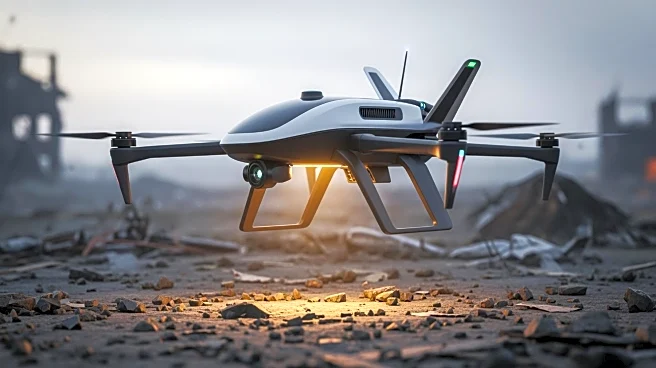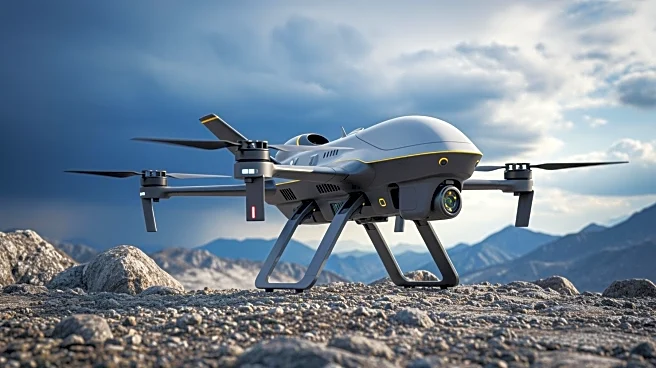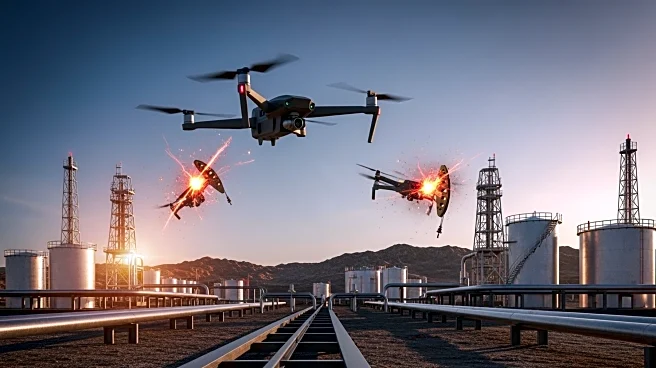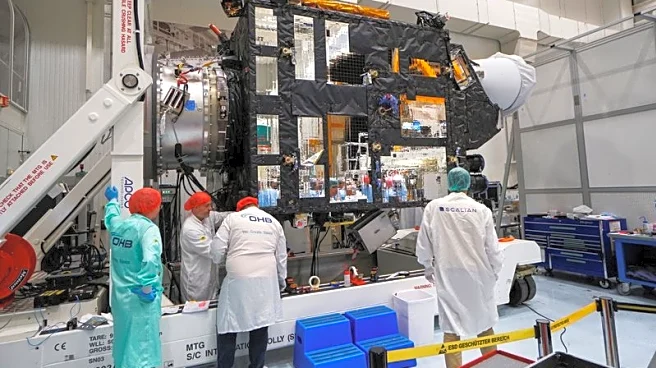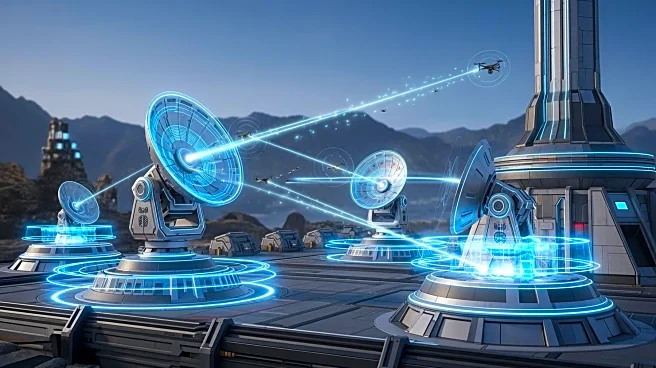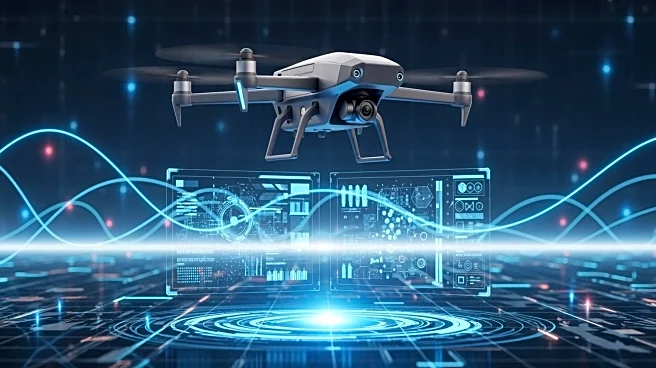What's Happening?
SpaceX's Starlink satellite internet service is facing challenges in supporting Ukraine's military operations, particularly in controlling ground robots on the frontline against Russia. The limited bandwidth
provided by Starlink is affecting the performance of unmanned ground vehicles (UGVs) used for various military tasks, including supply delivery and evacuation. Ukrainian tech innovators are exploring alternative solutions to enhance communication capabilities, such as tethered drones carrying signal repeaters. These innovations aim to extend the range of radio signals, allowing for more effective control of military robots. Despite these efforts, the slow speed of UGVs due to bandwidth constraints remains a significant issue, impacting their operational efficiency in conflict zones.
Why It's Important?
The limitations of Starlink's bandwidth have significant implications for Ukraine's military strategy and technological innovation. The reliance on Starlink for communication highlights the critical role of satellite internet in modern warfare. The inability to operate UGVs at optimal speeds can hinder military operations, potentially affecting the safety and effectiveness of Ukrainian forces. The search for alternative solutions underscores the need for robust communication systems in conflict zones. This situation also reflects broader challenges in integrating commercial satellite services into military applications, where reliability and speed are crucial. The development of AI-powered autonomous navigation systems could offer long-term solutions, reducing dependency on real-time human oversight and mitigating signal disruption risks.
What's Next?
Ukrainian tech innovators are likely to continue developing and implementing alternative communication solutions to overcome the limitations of Starlink. The use of tethered drones and signal repeaters may become more widespread, enhancing the operational capabilities of military robots. Additionally, advancements in AI technology could lead to more autonomous systems, reducing the need for constant human control and minimizing the impact of signal loss. As the conflict persists, Ukraine may seek further collaboration with international partners to improve its technological infrastructure and explore new military technologies. The ongoing development of these systems could influence future military strategies and the integration of commercial satellite services in defense operations.
Beyond the Headlines
The reliance on commercial satellite services like Starlink in military operations raises ethical and strategic questions about the role of private companies in warfare. The limitations faced by Ukraine highlight the need for dedicated military communication systems that can withstand the demands of conflict zones. The integration of AI and autonomous systems in military operations also presents ethical considerations regarding the use of technology in warfare and the potential reduction of human oversight. These developments could lead to shifts in military tactics and the role of technology in national defense strategies, influencing future policy decisions and international relations.


